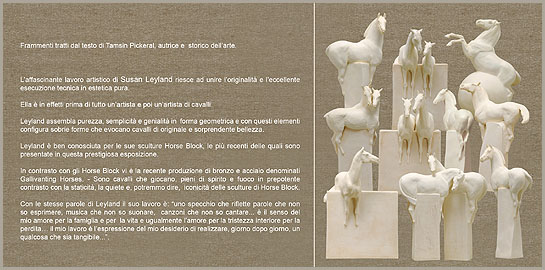
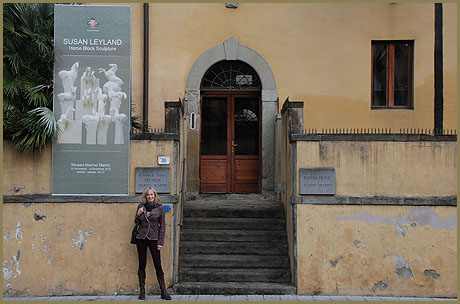
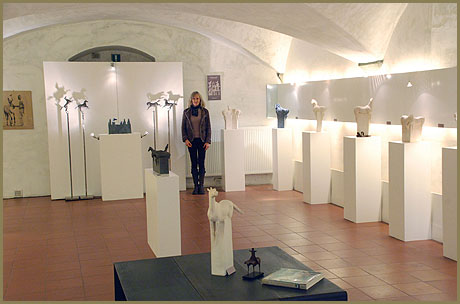
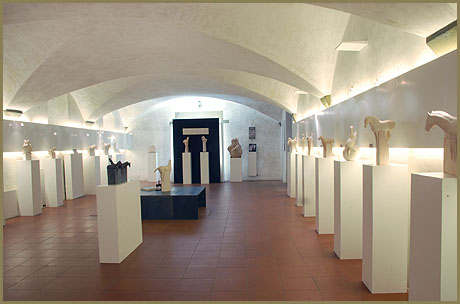
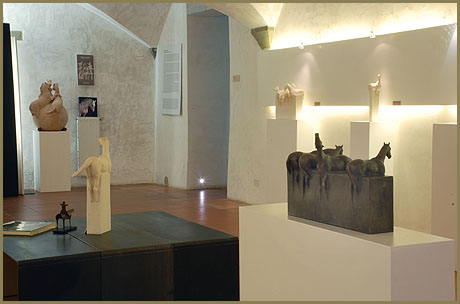
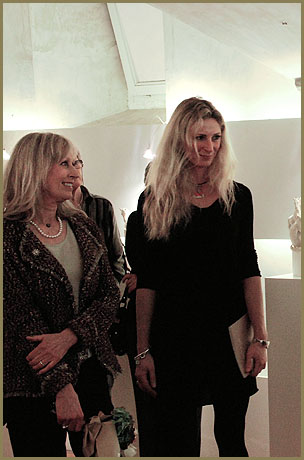
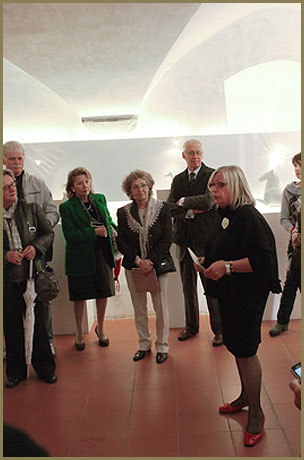

by
TAMSIN PICKERAL – AUTHOR AND ART HISTORIAN
The striking work of Susan Leyland combines
originality with exquisite execution and pure aesthetics; it is indeed a rare
delight to come across an artist whose work is so genuinely original in every
aspect. Her work is simultaneously complex and simple being a marriage of
crystalline linearity and geometric form with powerful underlying concepts. She
is also one of those rare artists whose images of horses are deeply moving but
never saccharine. Leyland is in effect an
artist first and an equestrian artist second. Her subject matter of horses,
though something for which she has a deep affinity and understanding of, is a
means to an artistic end. It is through this equine vehicle that she is able to
explore her artistry and to relate her emotional responses to it, and it is
this rationality that makes her work so truly sublime.
Her work is defined by its perfect balance,
a balance that extends from its actual physical form to the manifestation of
emotion. She brings together pure, simple and brilliant geometric form and from
these spare, unfussy shapes conjures horses of tremendous beauty and character.
These pieces are first and foremost impactful for their harmonizing of form and
space to such extent that their visual aesthetic is not restricted to those who
admire horses. Leyland does however have a
pansophic understanding of horses from the inside out. She has spent a life
time studying these most majestic animals; their physiognomy, their nature and
the connection between horses and humans. This tremendous knowledge has led to
a recent evolution in her working technique that has resulted in these most
recent and stunning pieces. Leyland, who is as skilled a draftsman as she is
sculptor has typically produced a series of detailed and beautiful sketches
prior to her work in clay. However, her recent pieces have no working sketches
and are entirely spontaneous being images produced from clay as an extension of
her own thought processes; a steady stream of consciousness translated into her
materials.
Leyland is
well known for her Horse Block sculptures, of which her newest feature in this
exhibition. Her working methodology is fascinating and for the emotion and soul in the sculptures.
She begins with the block and from this evolves these tremendous equestrian
figures, which according to the artist literally develop as she manipulates her
clay; it is in every sense a birthing process and the journey of something
exquisite born from a soulless lump of grey clay. The Horse Block sculptures
have a sense of timelessness, merging a feeling of the ancient with a pathway
to the future. They are resonant of quiet grandeur and majestic composure, each
one expressive of deeply felt but contained emotion. The shapes created by the
horses emerging from the blocks and the precise and brilliant balance between
the two is masterful. In addition Leyland’s
sparing use of line and detail creates a dynamic variance in texture and
visuals, one that is further enhanced through her bronzes and the extensive
range of subtle patinas she creates.
In contrast to her Horse Block sculptures is
her recent series of bronze and steel Gallivanting Horses, but in true Leyland fashion these again balance her other work. The
Gallivanting Horses are expressively energetic; they are light, joyous and full
of quick, fleeting movement. These are horses at play, full of spirit and fire
and in direct contrast to the stately, quiet and almost iconic feel to the
Horse Block sculptures. So in two separate groups of works Leyland
captures all facets of the horse and addresses the deep, elusive and inherently
alluring spirit that runs at the foundation of these magnificent animals. These
captivating pieces convey a little of the mystery and magic of the horse and
yet they also allow one to closely identify with them. As such they reflect
back to the viewer clear and present human conditions, those of a mother’s love
for her child, of mutual affection between friends, the joy in another’s
company and the silent pain of grief and loss. In Leyland’s own words, her work
is “a mirror that reflects words I do not speak, music I cannot play and song I
cannot sing … it is a means of expression for my love of family and of life and
equally for inner sadness and loss … my work is an expression of my desire to
accomplish, day by day, something tangible …”
Tamsin Pickeral – author and art
historian www.tamsinpickeral.com
Italian:
|
|